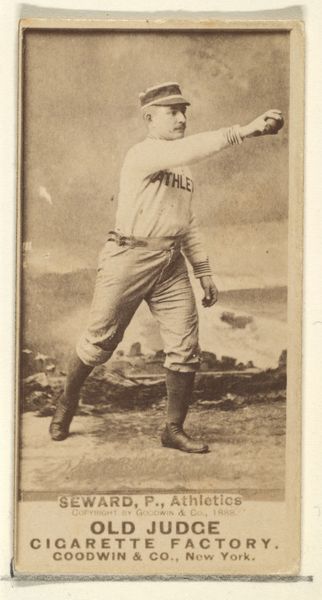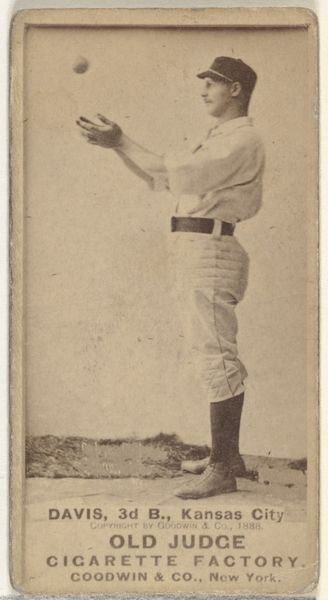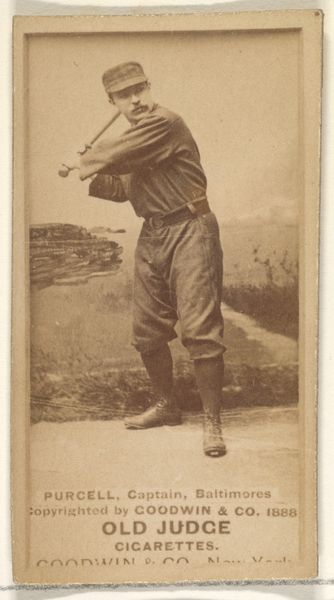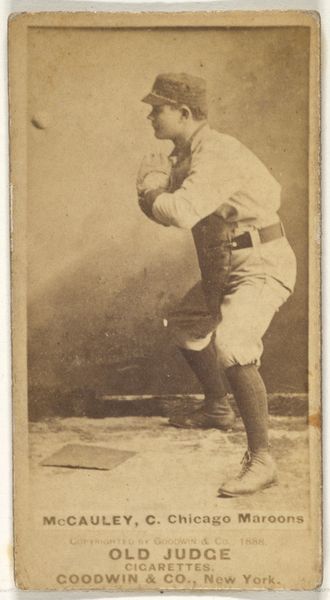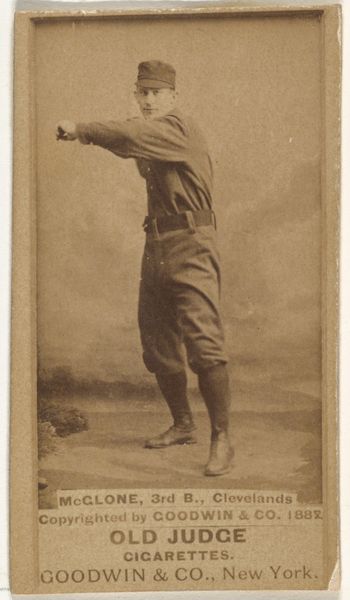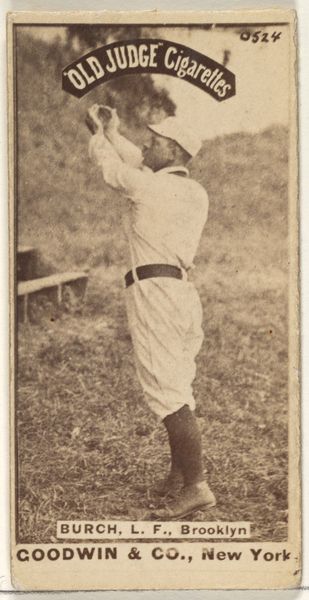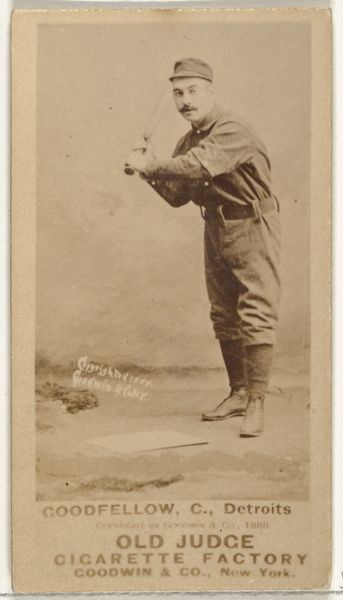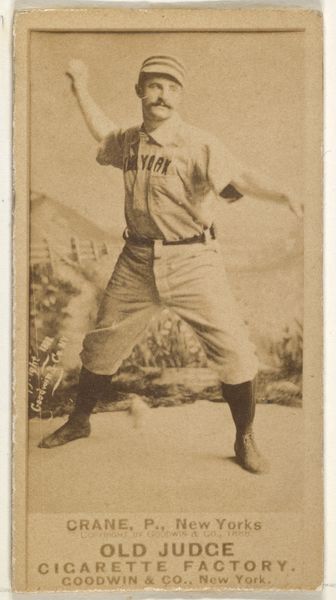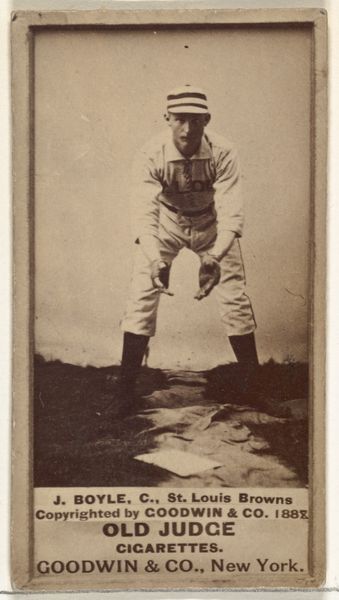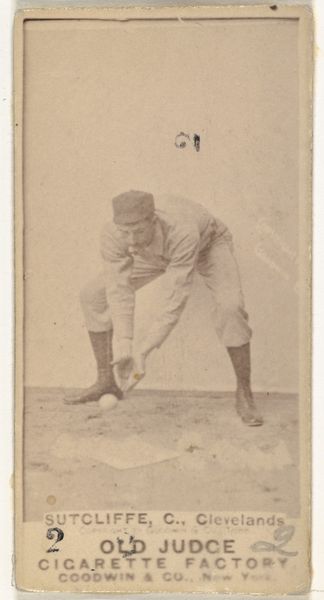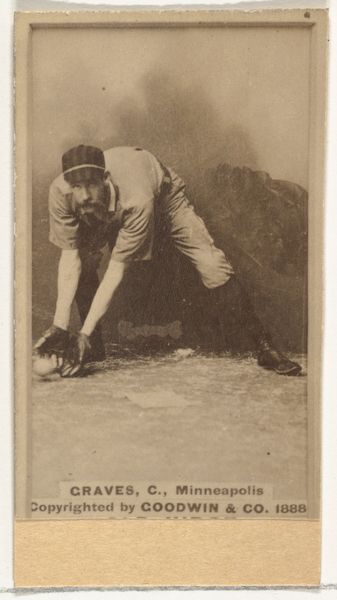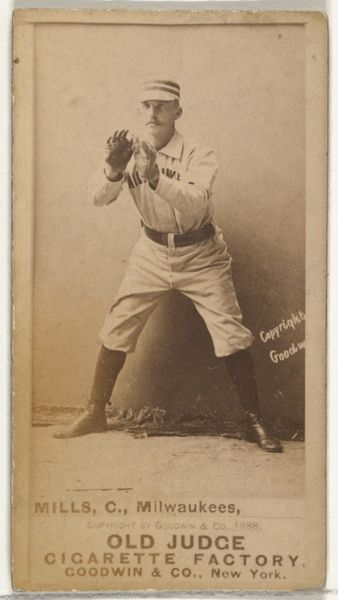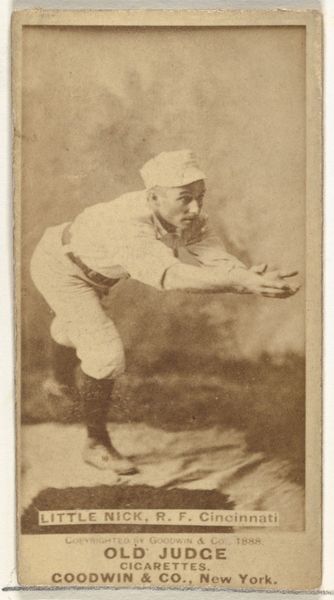
George F. "Piano Legs" Gore, Center Field, New York, from the Old Judge series (N172) for Old Judge Cigarettes 1888
0:00
0:00
drawing, print, photography
#
portrait
#
drawing
# print
#
impressionism
#
baseball
#
photography
#
men
Dimensions: sheet: 2 11/16 x 1 3/8 in. (6.9 x 3.5 cm)
Copyright: Public Domain
Curator: Here we have a remarkable piece of Americana: "George F. 'Piano Legs' Gore, Center Field, New York," a photograph from the Old Judge series, created around 1888. It was originally produced by Goodwin & Company as a cigarette card. Editor: Immediately, what strikes me is how this seemingly simple baseball card feels so posed and almost theatrical. The backdrop, the player's stance... It's far from the action shots we expect today. There's a stiffness that speaks to the social norms of the time. Curator: Precisely. It is staged, as action photography wasn't quite as developed then. Goodwin & Company aimed to capture recognizable figures from the burgeoning world of professional baseball and use them to sell tobacco. These cards served a key purpose in early marketing. Editor: Makes me think about labor—baseball's evolution from leisure to work, and the commodification of these players, particularly concerning racial issues of that era, which I feel are inherently tied to tobacco. Curator: Indeed. The cards, readily circulated, played a role in shaping these early stars' images and in projecting narratives about success, race, and fame onto them. George Gore here was certainly quite famous. Editor: He was known for his speed, right? And the moniker "Piano Legs" must say something about his build. The visual is fascinating because the card exists simultaneously as art, advertisement, and social document. We need to critically look at the context that this image brings to the surface about capitalism and male athleticism in the late 19th century. Curator: Yes, his speed earned him the nickname. This image prompts us to examine the broader cultural landscape in which baseball, as an institution, became entwined with industry, consumption, and the creation of public figures. It allows us to ask questions about image construction and baseball players' social standing at that period. Editor: I like the opportunity here to discuss image-making and what that image *does*, because there's so much implied meaning there. This isn’t just a card; it is cultural rhetoric about sport, industry and identity all rolled into one tiny artifact. Curator: A point very well made. These historical echoes linger within the visual space, underscoring the photograph's lasting value and relevance today.
Comments
No comments
Be the first to comment and join the conversation on the ultimate creative platform.
